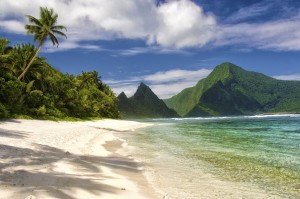I’m a big believer that islands will lead the way in decarbonizing the economy. Many of them have ample renewables resources, such as geothermal on Hawaii’s Big Island and Iceland, wind and hydro on Kodiak Island, and solar energy on other Hawaiian islands.
Now, on the heels of the big Tesla-SolarCity merger, the American Samoa island of Ta’u used the companies’ products to go 100% renewable. As the Washington Post reported, the island’s leaders wanted to stop depending on expensive, imported diesel fuel to generate electricity:
“[They] basically just put out a solicitation to see if anybody could provide an alternative to diesel, and that’s something that we responded to,” said Peter Rive, co-founder and chief technology officer of solar provider SolarCity, which was recently acquired by Tesla.
The result is a system composed of more than 5,000 SolarCity solar panels and 60 Tesla Powerpack battery storage systems. The new microgrid could save the island nearly 110,000 gallons of diesel fuel each year, which amounts to about 2.5 million pounds of carbon dioxide emissions, according to data from the U.S. Energy Information Administration.
The microgrid is already up and operating, according to Rive, and covering about 99 percent of the island’s power needs. The battery system can provide three full days of power to the island without sun, he added. And it can fully recharge in seven hours of sunlight.
It may have been easier for this island to go 100% renewable compared to other places, given its ample sunshine and small population. I’m assuming the island lacks energy-intensive industries as well. But the lessons can be applicable to other islands and economies, particularly when you factor in other generation technologies, like wind and hydropower.
Now if Ta’u just switches to all battery-electric vehicles, they’ll pull off the full eco-paradise.
Leave a Reply
You must be logged in to post a comment.



